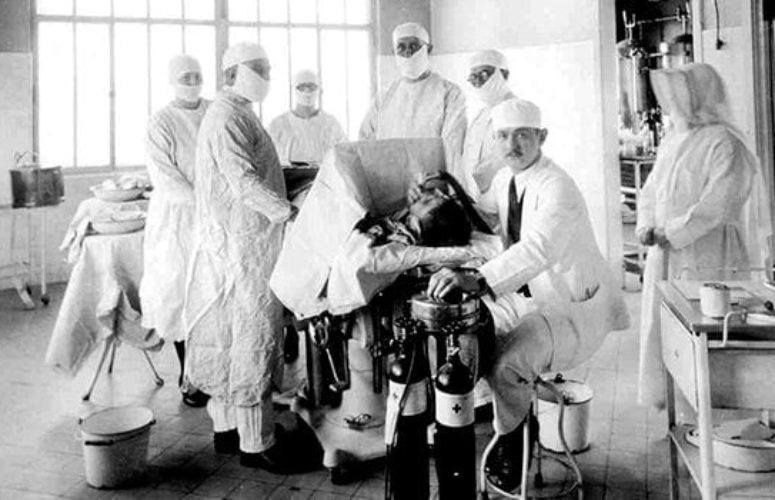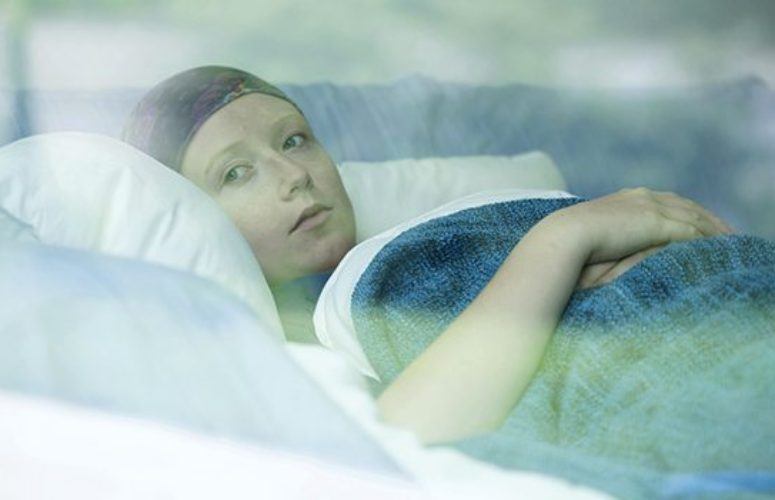
New Jersey Hospital Association Celebrates 100 Years
Members Continue to be Focused on a Common Goal – Good Health
By Lisa Goulian Twiste, Contributing Writer On Mar 28, 2018One hundred years ago, representatives of seven New Jersey hospitals gathered in Newark to discuss the global influenza pandemic and other pressing health challenges, as well as the need to create leadership in the form of one united body. What resulted was the establishment of the New Jersey Hospital Association (NJHA) – one of the first state hospital associations and a pioneer in many areas of health and hospital care.
This historic meeting was attended by Newark City Hospital (now University Hospital); Muhlenberg Hospital (now an ambulatory care facility, part of Hackensack Meridian Health); Elizabeth General Hospital (now Trinitas Regional Medical Center); Morristown Memorial Hospital (now Morristown Medical Center); Paterson General Hospital (now St. Joseph’s Wayne Hospital), Christ Hospital (now CarePoint Health Christ Hospital) and the Hudson County Tuberculosis Hospital and Sanitarium, which closed in 1961. It marked the start of a partnership that would yield positive change and innovation in those early years, as New Jersey became the first state to champion public policy for humane care of the mentally ill; the first to use penicillin to treat patients; the first to widely adopt antiseptic theories in health facilities; and the first to develop organized hospital volunteer programs.
And that’s just the tip of the iceberg, with NJHA supporting groundbreaking programs through the rest of the 1900s and into the 21st century. As NJHA celebrates its 100th anniversary this year, the organization continues to push the boundaries of not only healthcare, but education and prevention, emphasizing healthy communities and developing systems that encompass the entire continuum of care.
“NJHA has an incredible history as an organization that collaborates with others, shares best practices and leads the way,” says John Lloyd, FACHE, co-CEO of Hackensack Meridian Health in Edison, and a former NJHA chairman. “It’s an amazing advocacy organization, mostly in New Jersey, but also in Washington, DC, with the American Hospital Association. The fact that we’re celebrating its 100th anniversary is phenomenal.”
“The great thing about the NJHA is there has always been a commonality to do what’s best for New Jersey,” says Joseph Devine, FACHE, president, New Jersey Division, and executive vice president of hospital and health services at Jefferson Health in Voorhees, and a 32-year veteran of New Jersey healthcare. “The leaders who came before were great mentors to us in this regard. I think that’s what has made us unique, that we can fight through issues to make decisions that are best for the collective good.”
And while taking care of people is the mission and focus of NJHA and its members, the healthcare provider community is also an undeniable force in the state’s economic well-being.
“Hospitals have been the economic engine for communities and for the state, providing $23.4 billion in economic activity annually including 144,000 jobs, $9 billion in employee salaries and $3.3 billion in goods and services purchased from other businesses,’’ says Amy Mansue, president of the Southern Region for RWJBarnabas Health and 2018 Board chair for NJHA. “While our role as an employer is critical, the essential core of our work is serving side by side as a system of healthcare providers, delivering health services to our families, neighbors and communities.”
EARLY HISTORY
From its early years, NJHA showed a pattern of evolving alongside changes in the healthcare landscape. In the 1930s, as the nation struggled through the Great Depression, the organization joined with 17 of its members to form the Hospital Service Plan of New Jersey – the first precursor to the Blue Cross plans. In the 1940s, amid medical advances on the battlefields of World War II, NJHA hired its first full-time executive, J. Harold Johnson, and developed its first annual budget of $12,000. Moving along to the 1950 and 1960s, NJHA’s attention turned to emergency planning, workforce development and the first use of computers to collect hospital data statewide. And in 1970, an NJHA headquarters was established on Alexander Road in Princeton as a center for its affiliates and activities.
NJHA continued to lead throughout the 1980s, as New Jersey became the first state to adopt the DRG (Diagnosis-Related Group) reimbursement model that later became national policy. According to Al Maghazehe, PhD, FACHE, president and chief executive officer for Capital Health in Trenton, when he started his career in 1980, New Jersey healthcare was based on a “fee for service” system, whereby healthcare providers were paid for each individual service that was provided during a hospital stay. This system was often criticized as incentivizing physicians to provide more treatments because payment depended on the quantity of care, rather than quality of care.
DRG reimbursement, on the other hand, was designed to pay for the diagnosis, not the treatment, and represented a first step in promoting wellness in the population, says Maghazehe.
In 1987, the Uncompensated Care Trust Fund Act made New Jersey one of just two states in the nation where citizens are guaranteed care at all hospitals, regardless of their ability to pay. This underscored a long history of compassionate care at New Jersey hospitals, many of which had their roots in religious institutions that started as homes for the poor and destitute.
“Most of our Catholic hospitals serve as an urban safety net, and we have continued to stay true to that mission for more than 150 years. It’s about dignity and respect for all,” says Sister Pat Codey, president of the Catholic HealthCare Partnership of New Jersey – which includes the state’s Catholic hospitals – and an NJHA Board trustee. “Over the course of 100 years, NJHA has been a major voice for improved healthcare and delivery, which listens, recommends, educates and advocates for all in New Jersey. We’ve had wonderful leadership then and now, and as long as we maintain credibility and transparency, we will continue to be the voice of respect and influence as an organization for the future.”
This belief in compassionate care and community benefit continued into the 1990s, with an increasing number of ambulatory and community-based care sites – allowing people to be treated for many chronic and non-life-threatening medical issues closer to home. “NJHA was a forerunner among state associations in expanding its membership beyond hospitals. As healthcare evolves, it’s less about filling hospital beds and more about keeping people well in the community – and that’s why post-acute care providers like nursing homes, home health, rehabilitation facilities and others are such an important part of the NJHA membership,” Mansue says.
A NEW CENTURY
As NJHA entered the new millennium, the focus continued to shift toward providing top-quality care in the most cost-effective manner, beginning with the formation of the HRET Institute for Quality and Patient Safety in 2002, an affiliate of NJHA. The Quality Institute leads NJHA’s hospital and post-acute care members in identifying areas to improve patient care and working collaboratively through education, best practices and data sharing to achieve better outcomes. The collaborative approach has yielded tremendous results including double-digit reductions in post-surgical infection rates, medication errors and pressure ulcers. That success has made healthcare safer for New Jersey patients and has resulted in millions of dollars in healthcare cost savings.
In another example of its innovation, NJHA pioneered a gainsharing program in 2003 that became a national payment model for aligning hospital and physician incentives, while also greatly expanding its focus to the full continuum of providers caring for people in the community.
However, it was around this time, Devine says, that the state started talking about cutting funding for charity care, the state program that reimburses hospitals for the care they provide to New Jersey’s uninsured residents. He recalls a large crowd of healthcare professionals marching in a rainstorm to the steps of the capital building in Trenton to make sure this didn’t happen – demonstrating the political will of NJHA when policy actions clash with the healthcare community’s goal of providing quality, affordable and accessible healthcare to New Jersey residents. “Everyone rallied together to be at the forefront of something we thought was important,” he says. “We challenged legislators to understand it wasn’t about hospitals, but about the people in need.”
The 21st century has also brought the idea of “wellness” into sharp focus, which has changed the landscape dramatically for the better, according to Maghazehe. “Say we’re covering a population of 50,000 people; we are given X amount of dollars per person, not per patient, which is a great incentive to keep people healthy – exactly the opposite of what it was when I started,” he says.
This emphasis on keeping people healthy has also led to major prevention programs. Examples now well established include women over a certain age being advised to have screenings such as mammograms, pap smears, and colonoscopies, while men are urged to have their prostates checked. Today, that focus on wellness and prevention extends even further into social issues that have a very real influence on individuals’ health – things like adequate housing, access to healthy foods, a safe place to exercise and be active, education and literacy. These “social determinants of health” are a key focus as NJHA enters its second century.
THE RISE OF NEW MEDICAL TECHNOLOGIES
Advancing medical technology is certainly a driving force behind New Jersey’s hospitals, and they have been at the forefront of “a steady stream of truly life-changing advancements in technology, travel and communication,” says Trish O’Keefe, PhD, RN, president of Atlantic Health System’s Morristown Medical Center. O’Keefe points specifically to the introduction of the x-ray machine, first motor ambulance, electrocardiograph, penicillin, radium therapy for cancers, insulin, open-heart surgery, the laser, and linear accelerator, among other medical breakthroughs, saying, “These advancements meant that the state’s medical centers changed from quiet community-based hospitals to the sprawling, state-of-the-art, nationally recognized hospitals we have today.”
Some practitioners have seen this evolution first hand.
“When I first began my medical career, there was a preconceived notion about the level of sophistication of hospitals outside of major cities,” recalls Dr. Herbert Dardik, Englewood Hospital and Medical Center Chief Emeritus of Vascular Surgery and General Surgery. “However, the growth, innovation, expertise and quality of care that I have witnessed over my decades of practice in New Jersey has flipped that notion on its head.”
Lloyd credits the organization with helping New Jersey hospitals forge significant relationships with leading health information technology companies. NJHA has honed its own in-house HIT and data capabilities, providing data and analytics to improve patient care, identify opportunities for greater efficiency and show trends in healthcare utilization.
Codey expects information technology, including artificial intelligence, to become an increasingly dominant factor impacting New Jersey hospitals in the next 10 years, dramatically changing the role of healthcare providers. Wearable devices that individuals can use to monitor their activity and vital signs and innovations from newcomers to healthcare, like Amazon, are transforming care delivery. “It’s about new and emerging technology; the breadth and depth are incredible,” Lloyd says. “We believe we have to be much more innovative. You can’t stand still in this industry. Everything is changing all the time.”
NJHA’S FUTURE
Another example of collaboration comes from Devine, who will step into the role of NJHA Chairman in 2019. He points to the South Jersey Behavioral Health Innovation Collaborative (SJBHIC), a landmark initiative driven by the five major health systems in the region to evaluate and recommend substantial improvements to behavioral health in southern New Jersey. “We’re zeroing in on substance abusers and others who have special needs, talking about how to service them together, along with social agencies, and it’s working,” Devine says. “My hope is that we’ll deliver care across systems to help this population get to the right places where it can receive the care it needs.”
Yet with funding for institutions being cut on both the state and federal levels, Codey says the New Jersey healthcare community will have to come up with creative ways to help the underserved, undocumented and underinsured with new streams of revenue. “There’s a widening of the river between the ‘haves’ and ‘have nots,’ and the bridge is getting longer instead of shorter,” she says. “We need to remember we’re providing a service for all the people of New Jersey – on our city streets and on our suburban sidewalks – and we need to have pharma, insurance companies and medical professionals all playing a role in healthcare, sharing a common mission of delivering the best outcomes for all of us.”
Adds O’Keefe: “Technology, infrastructure and medicine continue to change, but what will remain unchanged is our collective commitment to providing the best medical care in healing environments for our communities. The past century has taught us that we are most powerful treating, educating, advocating and teaching when we do so together under the umbrella of NJHA.”
Mansue agrees, noting that through the decades, the simple and profound mission of taking care of people is a constant for NJHA and its members.
“As NJHA celebrates its centennial, I look back at our mission statement in 1947, which pledged to ‘promote the welfare of the people,’” she says. “I consider that the ‘true north’ for NJHA and its members, and, in fact, it’s remarkably similar to the new mission statement we’ve adopted in this 100th anniversary year – to improve the health of the people of New Jersey.”
Related Articles:






